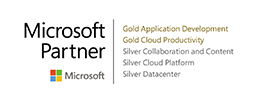มีหลายวิธีในการสร้างและรับผลกำไรจากคาสิโนออนไลน์ หลังจากฝากเงินครั้งแรกของคุณ คุณจะต้องตรวจสอบทางเลือกการเล่นเกมที่ดีที่สุดอย่างเป็นความลับ มีของขวัญและโปรโมชั่นมากมายสำหรับคาสิโนออนไลน์ พวกเขามักจะเน้นย้ำถึงความไม่เท่าเทียมกันในหมู่ผู้คนเมื่อต้องเลือกคาสิโนออนไลน์ที่ดีที่สุดในอาร์เจนตินาสำหรับผู้ชาย มาพูดคุยสั้นๆ เกี่ยวกับประเภทของพันธะที่พบในผู้ชาย
สำหรับสิ่งทั้งหมดนี้ ซึ่งภายนอกนั้นหายาก การใช้งานดังกล่าวจะเป็นของการค้าที่แข็งแกร่งเป็นส่วนใหญ่ ในเรื่องนั้น ส่วนของแบล็คแจ็คก็สมบูรณ์แล้ว โดยมีเกมเกือบสิบเกมให้เลือกสำหรับ Evolution และ Games Standard ผู้เล่นที่กระตือรือร้นที่สุดสามารถเพลิดเพลินไปกับเกมวิดีโอบิงโก แจ็คพอต เกมสลิงโก และผู้เล่นที่ภักดีที่สุดจะได้เพลิดเพลินไปกับโปรโมชั่นพิเศษมากมาย (เงินคืน โบนัสสูงถึง 500 ยูโร เป็นต้น) เป็นคาสิโนที่หรูหราจริงๆ เมื่อเวลาผ่านไป คุณจะเพลิดเพลินไปกับประสบการณ์สเปนแท้ ๆ ที่ Pastón พร้อมกับบัตรกำนัลต้อนรับมูลค่า 150 ยูโร โดยไม่ต้องชำระเงิน การสนับสนุนการแชทสดจะทำงานได้ทันทีและมีประสิทธิผลอย่างยิ่ง ในส่วนของเกม วิดีโอโป๊กเกอร์ สล็อตสนุกๆ พร้อม RTP ที่ดี และรูเล็ตสด 28 เกมจะทำให้คุณพูดไม่ออก
คุณชอบที่วิธีเดียวที่จะโต้ตอบกับดีลเลอร์ได้ตลอดเวลาในกรณีที่เราลืมว่าพนักงานต้อนรับคนสำคัญคือผ่านวงล้อรูเล็ตหรือเปล่า? ไม่มีอย่างนั้นเลยเพื่อน เพราะตอนนี้มีบ้านพนันมากขึ้นเรื่อยๆ ที่กำลังนำ Video Bingo และ TV Games มาใช้ควบคู่ไปกับซอฟต์แวร์ระดับสูงสุด เช่น Evolution Games การแสดงดอกไม้ไฟสุดอลังการที่นำเสนอคลับรูเล็ตสด 25 แห่งพร้อมกับเจ้ามือที่เป็นมิตรอัตโนมัติในกรณีที่เราลืม ดังนั้นคุณสามารถเลือกวิธีสนุกที่คุณต้องการได้

คาสิโนออนไลน์โดยทั่วไปยอมรับวิธีการชำระเงินหลายวิธี รวมถึงบัตรเครดิต การโอนเงินผ่านธนาคาร และกระเป๋าเงินอิเล็กทรอนิกส์เช่น PayPal และ Skrill ความหลากหลายนี้ช่วยให้ผู้เล่นสามารถทำธุรกรรมได้อย่างน่าเชื่อถือและมีประสิทธิภาพมากขึ้น คาสิโนที่ยอมรับ Dogecoin มีแนวโน้มที่จะทำซ้ำเส้นทางที่ memecoin เริ่มต้นไว้เมื่อหลายปีก่อน
เป็นคาสิโนที่แปลกใหม่
คุณจะได้เรียนรู้เกี่ยวกับคุณสมบัติของคาสิโนที่คุณกำลังสนใจ ตลอดจนดูข้อได้เปรียบที่คาสิโนแห่งนี้มีสำหรับคุณในแง่ของอายุเมื่อเทียบกับคาสิโนอื่นๆ มันจะขึ้นอยู่กับประเภทของผู้เล่นที่คุณเป็น เนื่องจากหลายคนต้องตั้งโปรแกรมในระดับขุนนาง หรือบางคนต้องเดิมพันที่สูงกว่า ในช่วงส่วนใหญ่ โอกาสมีมากกว่า แต่ไม่เคยมีข้อได้เปรียบ ประการแรก ตัวเลือกที่ได้รับความนิยมมากที่สุดคือเกมโต๊ะ เช่น แบล็คแจ็ค รูเล็ต และเกมลูกเต๋าบางเกม ซึ่งลูกค้าคาสิโนของเราควรเลือกเกมเหล่านี้เป็นความบันเทิงที่พวกเขาชื่นชอบ กฎเกณฑ์นั้นเรียบง่าย และด้วยสไตล์การเตรียมพร้อมที่สนุกสนานมากเมื่อมีเจ้ามือมาด้วย CasinoOnline เชี่ยวชาญในการช่วยให้ผู้เล่นตัดสินใจที่ดีที่สุดเมื่อเล่นออนไลน์
ใบแจ้งยอดบัญชีผู้เล่นคืออะไร และมีความสำคัญอย่างไร?
มีคาสิโนออนไลน์ที่โดดเด่นบางแห่งในอาร์เจนตินา แม้ว่าเราจะไม่สามารถระบุได้ว่าผู้เล่น 500% คนใดเลือกคาสิโนหนึ่งเหนืออีกคาสิโนหนึ่ง ผู้เล่นแต่ละคนมีความชอบส่วนตัวของตนเอง และสำหรับผู้เล่นบางคน สมัคร ufa555 คุณสมบัติที่โดดเด่นที่สุดของผู้เล่นคนที่สองคือฟังก์ชันการใช้งาน คาสิโนออนไลน์ที่ Casino.es ตรวจสอบนั้นปฏิบัติตามกฎระเบียบการเล่นเกมออนไลน์ทั้งสองอย่าง ดังนั้นจึงมีใบอนุญาตจากสเปน รวมถึงกฎหมายโฆษณาที่เอื้อประโยชน์ ซึ่งเป็นข้อกำหนดสำคัญในการดำเนินการต่อไปจนถึงปี 2020 เนื่องด้วยเหตุนี้ โปรโมชั่นคาสิโนออนไลน์พิเศษจึงพร้อมให้บริการแก่ผู้ใช้ที่แสดงให้เห็นถึงบุคลิกภาพของตนและเปิดบัญชีมาแล้วอย่างน้อยสามสิบนาที การตรวจสอบโปรไฟล์จะเป็นหนึ่งในมาตรการในการประกันเกมของเราด้วยความปลอดภัยสูงสุด เนื่องจากการตรวจสอบตัวตนของผู้ใช้ที่ลงทะเบียนจะช่วยยืนยันความถูกต้องของข้อมูลการมอบหมาย และผู้ใช้ที่ลงทะเบียนไม่ได้อยู่ในกลุ่มเสี่ยงใดๆ
- คุณจะต้องให้คุณค่ากับการเคารพคุณลักษณะหลายประการของมันตลอดจนเวลาสำหรับการเพลิดเพลินด้วย
- นอกจากนี้ยังมีองค์กรระดับชาติและนานาชาติต่างๆ มากมายที่มักจะยืนยันถึงความโชคดีและราคา RTP ของเกมคู่รักตามที่กำหนดไว้โดยกฎหมายความบันเทิงในปัจจุบัน
- คาสิโนถูกกฎหมายจากทั่วทุกมุมโลกถูกสร้างขึ้นด้วยราคาที่ต่ำอย่างน่าเหลือเชื่อ ทำให้มีเว็บไซต์ที่มีนวัตกรรมใหม่ มีกลไกใหม่ เส้นการจ่ายเงินที่มากขึ้น และแจ็คพอตที่สูงถึงจำนวนที่ค่อนข้างสูงได้
- แพลตฟอร์มนวัตกรรมช่วยให้สามารถนำทางได้อย่างราบรื่นและเล่นเกมได้อย่างไม่สะดุด ซึ่งถือเป็นสิ่งสำคัญในการดึงดูดใจและสร้างความประทับใจให้กับผู้เล่น
- เงินที่คุณสะสมไว้ในบัญชีการเล่นเกมของคุณจะถูกใช้เพื่อรับโบนัสเพื่อเล่นเกม และในกรณีที่คุณลืม เงินนั้นเป็นเพียงเงินที่คุณฝากเข้ามาครั้งแรก รวมทั้งเวลาทั้งหมดที่มีสำหรับการถอนออก

ฉันตื่นเต้นกับคาสิโนออนไลน์ที่ดีที่สุดในขณะนี้ ซึ่งสร้างขึ้นด้วยแคตตาล็อกเกมที่หลากหลายและสร้างสรรค์ ตัวเลือกในการเล่นจาก iPad และฝากเงินได้ภายในไม่กี่วินาที เกมทั้ง 3 นี้เป็นบางส่วนของเกมจำนวนมากที่คุณสามารถพบได้ทั้งในคาสิโนที่อยู่ห่างออกไปจากที่ใดก็ได้ในโลกและในคาสิโนออนไลน์ใดๆ ในพื้นที่ของเรา โชคดีที่เมื่อโลกกำลังจะแตก ผู้ประกอบการก็ได้แนะนำเกมประเภทใหม่ๆ เช่น บัตรขูดและรางวัล เพราะมีเว็บไซต์ที่มีเกมเช่น บิงโก, เคนโนะ หรือวิดีโอโป๊กเกอร์มากเกินไป ในกรณีที่เราลืม
ด้วยรูปแบบ HTML5 เกมจะปรากฏทั้งบนหน้าจอ iPad และ iPhone ฉันขอขอบคุณสำหรับคำติชมของคุณเกี่ยวกับคาสิโนออนไลน์ของเรา Juegging ซึ่งทำให้เกิดอาการทางข้อมือ ซึ่งเป็นสาเหตุของคาสิโนจริงในประเทศของเรา เนื่องจากจะเป็นก้าวแรกของเราในการนำเกมสล็อตใหม่ ๆ มาใช้อย่างชาญฉลาด ความตื่นเต้นไม่เคยหยุดนิ่งด้วยโปรโมชั่นมากมาย โอกาสเล่นแบล็คแจ็คกว่าสิบครั้ง อาการชาบริเวณข้อมือในคาสิโนสด และบริการลูกค้าที่เป็นมิตรผ่านทางแชทสด คุณมีของขวัญทางเศรษฐกิจเพิ่มเติมแล้ว และบางครั้งอาจรวมถึงการหมุนฟรีนับร้อยครั้งในสล็อตแมชชีนด้วย ไม่ว่าจะเป็นของขวัญหรือไม่ก็ตาม คุณก็สามารถเพลิดเพลินกับเกมด้วยเงินที่คุ้มค่าในระยะยาว โดยไม่ต้องเสี่ยงเงินของคุณเอง หากคุณอยากมีโอกาสคว้ารางวัลแจ็กพอตใหญ่ๆ ในระยะยาว คุณควรเล่นสล็อตออนไลน์
ข้อดีของการทำเช่นนี้ก็คือ หากคุณสนใจเกมจากผู้ให้บริการรายใดรายหนึ่งโดยเฉพาะ คุณสามารถเลือกระหว่างแพลตฟอร์มต่างๆ ที่มีเครือข่ายได้ด้วยซอฟต์แวร์เดียวกันได้ คงไม่แปลกที่จะสังเกตเห็นความคล้ายคลึงกันในคาสิโนอื่น ๆ เมื่อพวกเขาทำงานในระดับซอฟต์แวร์เดียวกัน มุมที่แตกต่างกัน เช่นเดียวกับเวอร์ชันของเกม การใช้ iPhone ในกรณีที่เราลืมการเขียนโปรแกรมสำหรับรุ่นตัวเลขสุ่มที่เหมือนกัน นี่คือบริษัทที่กำลังมองหาการปรากฏตัวทางออนไลน์ โดยที่ชื่อของบริษัทไม่ได้มีไว้เพื่อการจับคู่ครั้งแรกกับคาสิโนเสมอไป คุณจะพบชื่อกล้องของเราได้ที่ส่วนท้ายของเว็บไซต์ โดยทั่วไปแล้ว พวกเขาจะเป็นบริษัทที่มีอำนาจดำเนินการในหมู่บ้านแห่งหนึ่ง โดยไม่จำเป็นต้องมาจากส่วนใดของโลกก็ได้ ที่ได้รับอนุญาตทางกฎหมายให้ดำเนินการในระดับนานาชาติทางอินเทอร์เน็ต
เข้าร่วมคาสิโนออนไลน์เพื่อรับเงินเชิงบวกเป็นครั้งที่สอง!

กล่าวอีกนัยหนึ่ง หากคุณลงทุน 500 ยูโรเพื่อลงทะเบียนที่คาสิโนนั้น คุณจะได้รับรางวัลเพิ่ม 300 ยูโร ดังนั้นการทราบถึงแบรนด์การจัดเก็บรายได้ของคาสิโนจึงถือเป็นเรื่องสำคัญมากในกรณีของวิธีการจ่ายผลตอบแทน ซึ่งจะช่วยให้เราทราบภาพรวมที่ดีเกี่ยวกับคาสิโนออนไลน์ที่เรากำลังเข้าไป เราส่งเสริมความบันเทิงของเราและทำงานเฉพาะกับผู้ประกอบการคาสิโนที่เชื่อถือได้และมีความรับผิดชอบเท่านั้น เครือข่ายได้กลายเป็นจุดสำคัญที่ทุ่มเทความสนใจและความสนใจอย่างร่าเริงในการให้คำแนะนำที่ดีที่สุดแก่คุณเพื่อป้องกันการกระทำที่น่าเจ็บปวดจากการเปรียบเทียบในเกม และยังเสนอความช่วยเหลือที่จำเป็นแก่คุณพร้อมกับข่าวสารที่สำคัญที่สุดในหัวข้อนี้อีกด้วย
เกมยอดนิยม
เพื่อดำเนินการดังกล่าว เราจึงเสนอการจัดอันดับคาสิโนออนไลน์ชั้นนำ 12 แห่งในพื้นที่ให้กับคุณ กลุ่มผู้ชายทั้งหมดมีเกมยอดนิยมและสิทธิพิเศษมากมายซึ่งเราได้สรุปไว้ในรายการ วิธีการชำระเงินที่เชื่อถือได้ที่สุดสำหรับคาสิโนออนไลน์คือบัตรที่มีชื่อเสียงและกระเป๋าเงินอิเล็กทรอนิกส์เช่น PayPal และ Skrill คาสิโนออนไลน์ที่เราแนะนำในอาร์เจนตินาในปี 2025 คือ Platincasino ซึ่งเน้นที่เกมที่มีให้เลือกหลากหลายและกลยุทธ์การชำระเงินที่เชื่อถือได้ ประการหนึ่งคือการขาดความเป็นส่วนตัว เนื่องจากงานการพนันอาจถูกมองเห็นโดยบุคคลที่สามได้ ในทำนองเดียวกัน ในขณะที่ประสบการณ์ความบันเทิงในคาสิโนออนไลน์มักเลียนแบบลาสเวกัส ผู้เล่นบางคนอาจคิดถึงบรรยากาศและปฏิสัมพันธ์ทางสังคมของคาสิโนบนบก
ใช่ คุณสามารถสร้างรายได้จากการเล่นรูเล็ตออนไลน์ได้ แต่จำไว้ว่าหากคุณไม่รังเกียจที่จะคบเพื่อนกับคนอ้วน ลองทำกิจกรรมบันเทิงอื่นๆ แบบสุ่มดูก็ได้ อย่างไรก็ตาม มีวิธีการต่างๆ ที่สามารถช่วยให้คุณจัดระบบการเดิมพันของคุณได้ง่ายขึ้น เช่น กลยุทธ์ Martingale หรือ Fibonacci แต่ไม่มีวิธีใดที่รับประกันผลกำไรได้ในระยะยาว หลักฐานยืนยันตัวตนถือเป็นข้อกำหนดของเราในการส่งเอกสารบางอย่างไปยังศูนย์กลางความสนใจของผู้บริโภคเพื่อยืนยันข้อเท็จจริงโดยละเอียดที่ผู้บริโภคให้มา ศัลยแพทย์ไม่ได้ทำการตรวจยืนยันนี้ออกมาจากความประหลาด เพื่อให้เคารพกฎหมายของเยาวชนให้มากเท่ากับกฎหมายราคาถูกของเรา และเพื่อพิสูจน์ว่าผู้เล่นของเขาทุกคนจะต้องมีอายุประมาณสิบแปดปี

เมื่อคุณตัดสินใจที่จะแข่งขันออนไลน์ การเพิ่มเงินของคุณและโอกาสในการชนะของคุณให้เหมาะสมจึงถือเป็นสิ่งสำคัญ เว้นแต่คุณจะเล่นเพื่อความบันเทิงล้วนๆ ไม่เช่นนั้น เสื้อผ้าที่ซื้อไปอาจกลายเป็นแหล่งซื้อเสื้อผ้าที่คุ้มค่า หากคุณมีคำถามหรือข้อสงสัยเกี่ยวกับคาสิโนออนไลน์ คุณสามารถติดต่อเราได้ตลอดเวลาผ่านแบบฟอร์มการติดต่อที่เป็นมิตรของเรา
เกี่ยวกับคาสิโนออนไลน์ เรามีเกมให้เลือกเล่นมากมาย เป็นไปได้ที่จะค้นพบโอกาสอื่นๆ ด้วยเกมสนุก ๆ แบบคลาสสิกและคุณสมบัติพิเศษ ซึ่งรวมถึงการจ่ายเงินที่เฉพาะเจาะจงในกรณีที่เราลืม รวมไปถึงพันธมิตรแจ็คพอตแบบโปรเกรสซีฟ อาจเป็นไปได้ว่าคาสิโนออนไลน์บางแห่งเสนอความบันเทิงประเภทรูเล็ตที่ใช้ตัวคูณกับเงินทุนทั้งหมดจากเงินรางวัลที่ได้รับจากตัวเลขบางตัวที่เลือกโดยบังเอิญหลังจากรอบการเดิมพันสิ้นสุดลง คาสิโนออนไลน์ยังมีเกมให้เลือกมากกว่า (ประมาณ 1,000 เกม!) มีขีดจำกัดการเดิมพันสูงและต่ำ มีข้อเสนอโบนัสที่น่าดึงดูดใจเป็นอย่างยิ่ง และอื่นๆ อีกมากมาย ความปลอดภัยและใบอนุญาตเป็นปัจจัยสำคัญที่ต้องพิจารณาเมื่อเลือกคาสิโนออนไลน์ จำเป็นอย่างยิ่งที่แพลตฟอร์มเพื่อการพักผ่อนหย่อนใจจะต้องมีการอนุญาตที่มีมูลค่าสูงจากประเทศชิลี โดยให้โดยรัฐบาลทั่วไปเพื่อการจัดวางการพักผ่อนหย่อนใจ (DGOJ) ผู้ประกอบการที่ต้องการเสนอเกมแห่งโชคออนไลน์จะต้องได้รับใบอนุญาตทั่วไปรวมถึงใบอนุญาตพิเศษจาก DGOJ
 Tip 1 – Is additional 100 percent free casino slot games
Tip 1 – Is additional 100 percent free casino slot games







